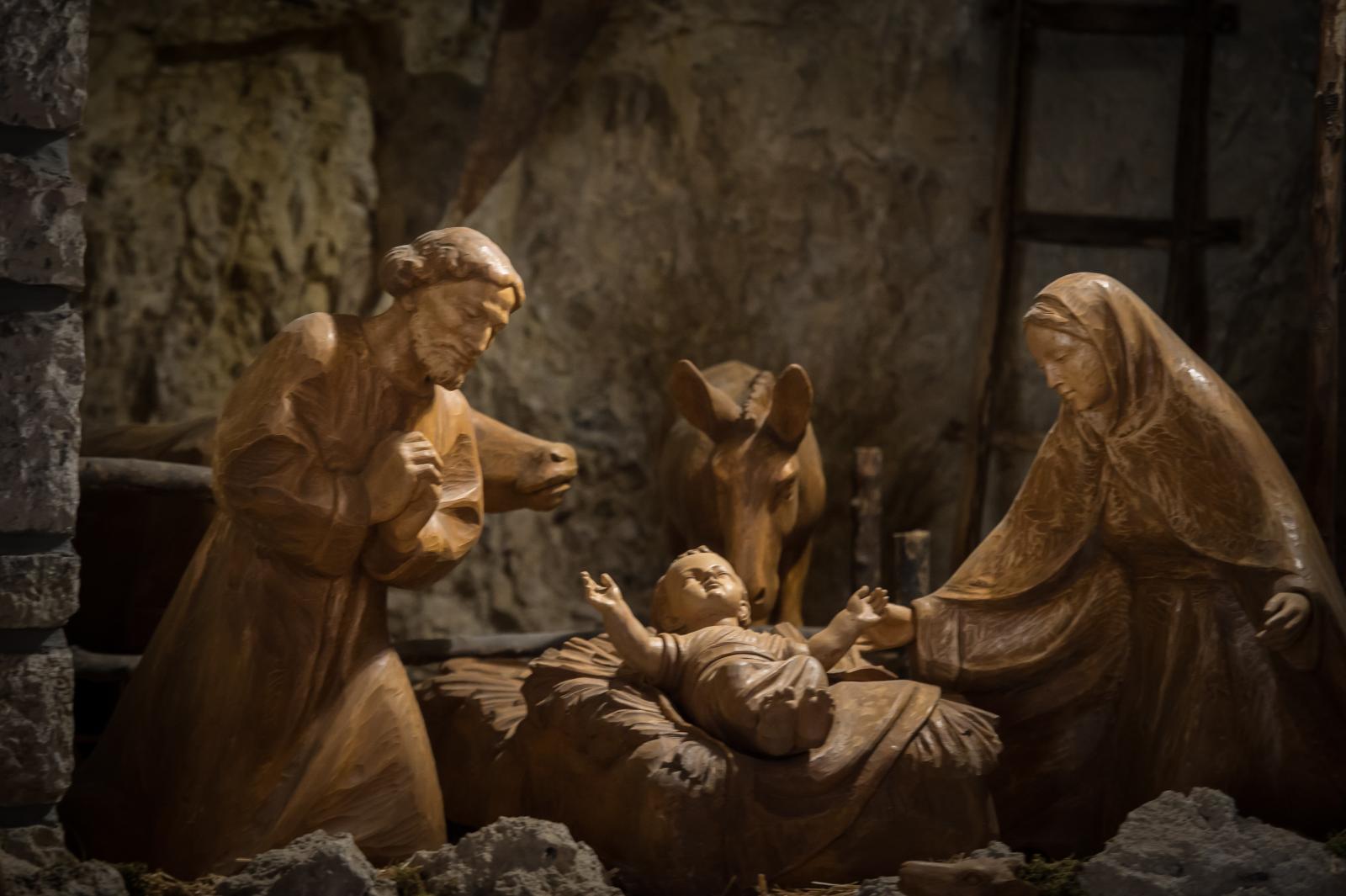By Bishop John Sherrington
‘Come, come, come to the manger,’ sing the children at the Vigil Mass of Christmas when the baby Jesus is laid in the manger and the crib is blessed. The ox and the ass look on, shepherds attend with joy, the angels will sing, and the Magi are some distance away as they follow the star to Bethlehem. Before this tender scene of love, women, men, mothers, fathers, the young and the old, will open their hearts and be touched by the intimacy of the Christ Child nursed by Mary and watched over by Joseph. Prayers of joy and sorrow will be offered.
This year marks the eight hundredth anniversary since St Francis of Assisi first created the crib in Greccio to proclaim to people the mystery of the Incarnation. We will remember the crib scenes where we have prayed.
As a child, I remember the excitement of the boxes of Christmas decorations being brought down from the loft and the box of crib figures carefully carried downstairs. I knew at an early age that these were precious and was blessed that they accompanied me from being a very young child through to the death of my parents.
The familiar and much-loved figures were treasured and handled with love. Some sort of backdrop of the dark sky with a bright star was painted again and again. My father’s skilful woodworking produced and repaired the crib when it became very battered. A basic circuit with a battery, a switch, a bulb, and some dodgy connections was an early physics lesson. Old hay was kept over the years; I don’t think it ever caught fire!
Over the years the importance of the crib grew into a central part of Christmas and increasingly dominated the festivities reducing the significance of tinsel and baubles until they became somewhat irrelevant. I am sure this pattern is repeated in many houses.
We are drawn to the Christ Child in the manger to gaze upon him, to adore and praise him and bring our petitions of prayer. There we hear the magnificent words of the opening of St John’s Gospel echoing in our hearts: ‘In the beginning was the Word, and the Word was with God, and the Word was God’ (John 1:1). This is a moment to pause and ponder the mystery of God made man who has come to save all people from their sins and invites them into following Christ who promises eternal life.
We, God’s holy people of lighted candles and white robes, are called to be a sign of this new life to women and men. We proclaim at Christmas, ‘In him was life, and the life was the light of men. The light shines in the darkness, and the darkness has not overcome it’ (John 1: 4-5). These words are full of confidence and hope; life and light are found in Christ and no darkness can overcome them.
This Christmas we are deeply aware and confronted on our screens by daily scenes of darkness: the horror of war, the misery of poverty, the desperation of migrants seeking a better life, the divisions in our society, the number of people sleeping rough around Westminster Cathedral, the pain of grief, and the list tragically continues.
The Christ Child reminds us that the darkness does not triumph, the inbreaking light of Christ brings forth hope. Love triumphs, step by step, one person to another, and the hope of Christmas shines through.
Fr Timothy Radcliffe OP spoke powerfully about the triumph of love at his opening talk at the recent Synod. He said, ‘In Auschwitz, Primo Levi, the Italian Jew, was given a share of bread every day by Lorenzo. He wrote: “I believe it was really due to Lorenzo that I am alive today; and not so much for his material aid as for his having constantly reminded me by his presence, by his natural and plain manner of being good, that there still exists a world outside our own, something and someone still pure and whole, not corrupt, not savage…something difficult to define, a remote possibility of good but for which it was worth surviving. Thanks to Lorenzo I managed not to forget that I myself was a man.” The small portion of bread saved his soul.’ (Fr Timothy Radcliffe OP, First Synod Retreat Meditation, October 1st, 2023)
At Christmas, light breaks into the darkness because the Christ Child is born.
Photo: Nativity in Greccio (Mazur/CBCEW.org.uk)
